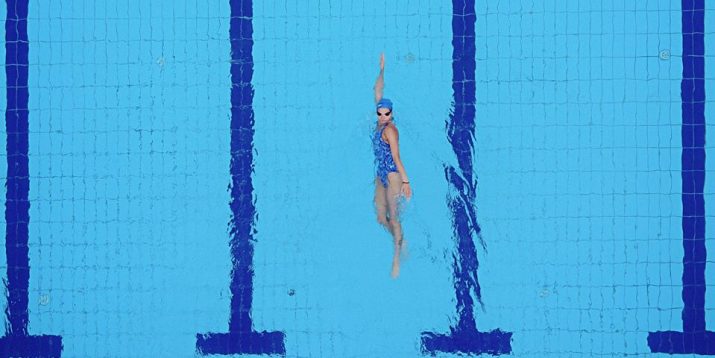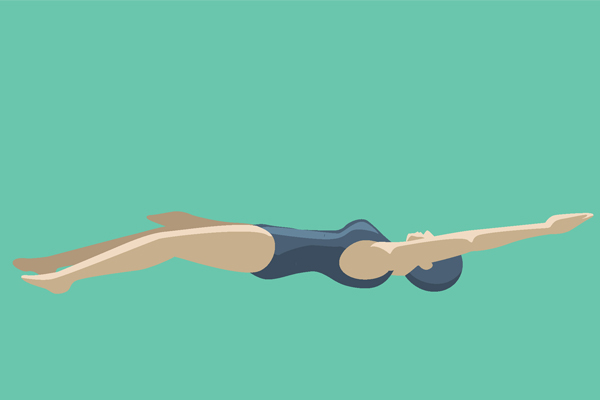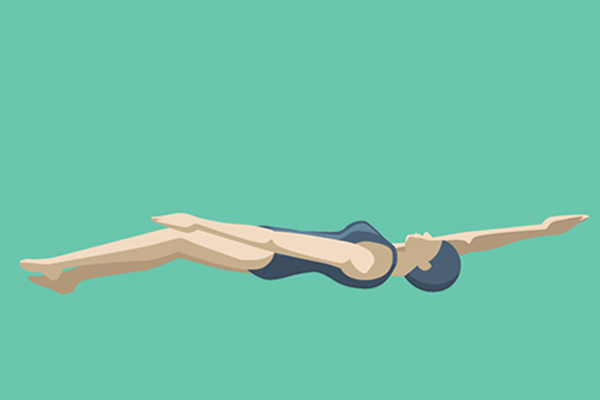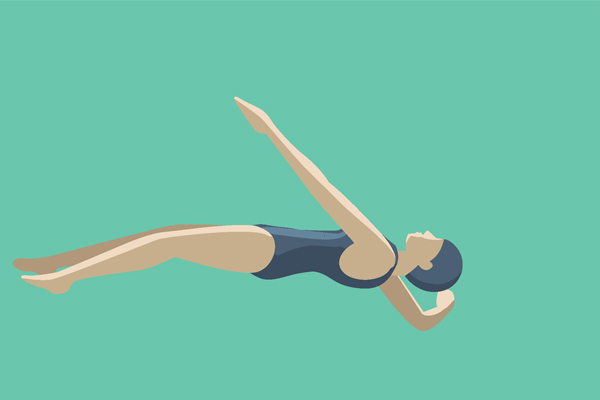Become a Stronger Swimmer by Mastering the Backstroke

Hitting the pool is one of the best ways to get fit: It burns tons of calories, offers a great cardiovascular workout, and is a zero-impact exercise. The go-to swimming stroke for most people is freestyle, but if you only stick to that one, your swim workouts can get pretty monotonous. That’s why learning how to do the backstroke will help balance out your workouts and your body.
Backstroke technique isn’t too hard to master and can be learned relatively quickly. Here are some tips on how to do the backstroke to help you get started.
What Is the Backstroke?
Backstroke is one of four recognized swim strokes. It’s the second fastest (after freestyle), and the only one that involves being on your back. To that end, it’s essentially freestyle on your back, as it involves the same flutter kick and also a long axis stroke, meaning you rotate your body along the long axis of your spine.
This is the opposite of the short axis strokes, butterfly, and breaststroke, which rotate along the short axis of your hips.
Backstroke Swimming Technique

Backstroke can initially seem like a daunting stroke to learn, especially if you are new to swimming, but don’t let that deter you.
Because your face is out of the water the entire time you swim backstroke, you don’t have to worry about the timing or frequency of your breathing, which can be one of the more complicated parts of other underwater strokes. This means you can perform regular, relaxed breathing, which lets you focus solely on the stroke.
The same principles that apply to freestyle swimming apply to backstroke (and, in fact, all strokes): reduce drag by improving you body position and increase power.
Body position
A great first step in learning how to do the backstroke is to just learn to float on your back to get comfortable with the body position. If you find it hard to remain buoyant enough to float easily on your back then use a light dolphin kick to help stabilize you.
“The key for most people when swimming backstroke is to maintain proper body position, which essentially means keeping your core taut and your hips and feet high,” says Chris Georges, USA Masters-certified swim coach who has been coaching for more than 40 years.
Body roll
To maximize your power in the backstroke, you should slightly roll your body from side to side. But only rotate from the neck down: “You want to keep your head perfectly still and steady while your shoulders and hips rotate,” Georges says.
Arms
The backstroke arm cycle involves the following: hand entry, pull, release, and recovery. Let’s look at these in closer detail below:
1. Hand entry

Your hand enters the water in line with your shoulder, pinky finger in first, and your arm straight. Rotate your body slightly to maximize your reach.
2. Pull

Pull your arm down and under the water, slightly bending your elbow. Sweep your arm down and through the water toward your outer thigh, pushing the water with your hand.
3. Release

As your arm nears your body, begin to straighten it, lifting it out of the water with your thumb leading.
4. Recovery

Move your arm in an arc to begin the stroke again with your pinky entering the water first.
Your arms should be moving continually in an alternating fashion — when one is sweeping up out of the water, the other arm is pulling underneath the water. This will create a smooth and continual movement forward across the water.
Kick
The backstroke uses the flutter kick, just like in freestyle. Here are some tips to master the flutter kick:
- Keep your legs close together.
- Generate power from your hips, not your knees. Your whole leg should be moving with each kick, not just your lower leg.
- Your legs should be relaxed and bent slightly. Think of your legs as battle ropes, moving fluidly up and down.
- Focus on smooth, consistent kicks at first. As you get more comfortable, you can start picking up the speed.
Why Should You Do Backstroke?
If you find yourself swimming a lot of freestyle, adding some backstroke to your workouts can help balance things out. Backstroke helps open up your chest and shoulder muscles which tend to get shortened and tight when swimming freestyle for longer periods.
Many people who typically only swim freestyle will often see improvements in their swimming strength when they start building in other strokes. That’s because it helps develop your feel for the water, and also adds some variety into your training.
Common Mistakes Made During Backstroke and How to Fix Them
“A common mistake among beginners learning backstroke is the combination of dropping their hips and doing a ‘bicycle kick’ (bending at the knee as they kick),” Georges says. “Often what accompanies these errors is a head position where the swimmer is looking down toward their feet.”
Not only is that hugely inefficient, but it also creates a great deal of drag. Here are some common form flaws and how to correct them:
- Dropping your hips. Georges suggests thinking about keeping your belly button dry. “This is actually pretty much impossible to do, but the cue alone will help keep your hips high, which is really what we want to see,” he says.
- Angling your neck too far forward or backward. Strive for a neutral neck with your head back and your eyes looking straight up. Your ears should be in the water.
- Bending your knees while kicking. When you “bicycle kick” instead of flutter kick, your knees will come out of the water, which you want to avoid. As for your toes, they should just gently break the surface of the water, Georges says.
Backstroke Drills
A good drill to hone your backstroke technique is to do the one-arm backstroke drill. “One arm stays inactive at your side while the other arm goes through the arm stroke cycle,” Georges explains. “The challenge is to maintain the proper body position, as well as making sure that each shoulder comes completely out of the water on each stroke cycle.

